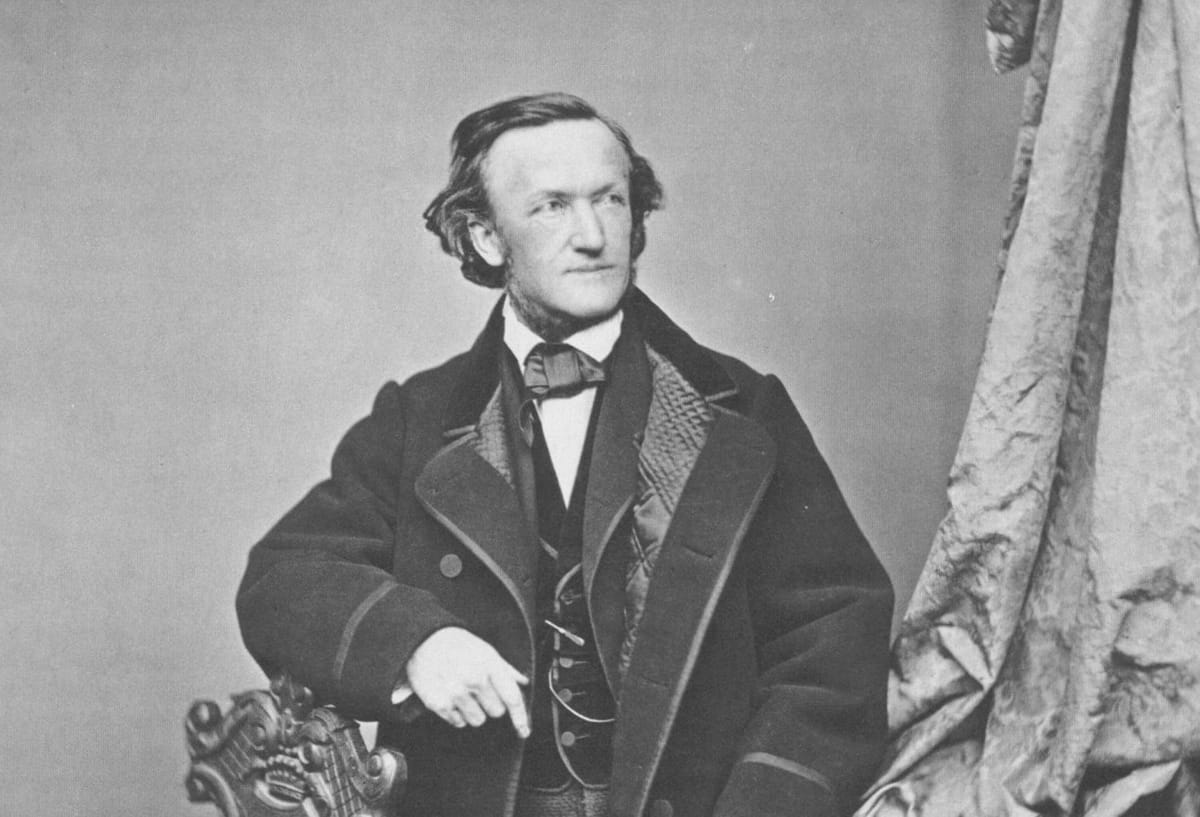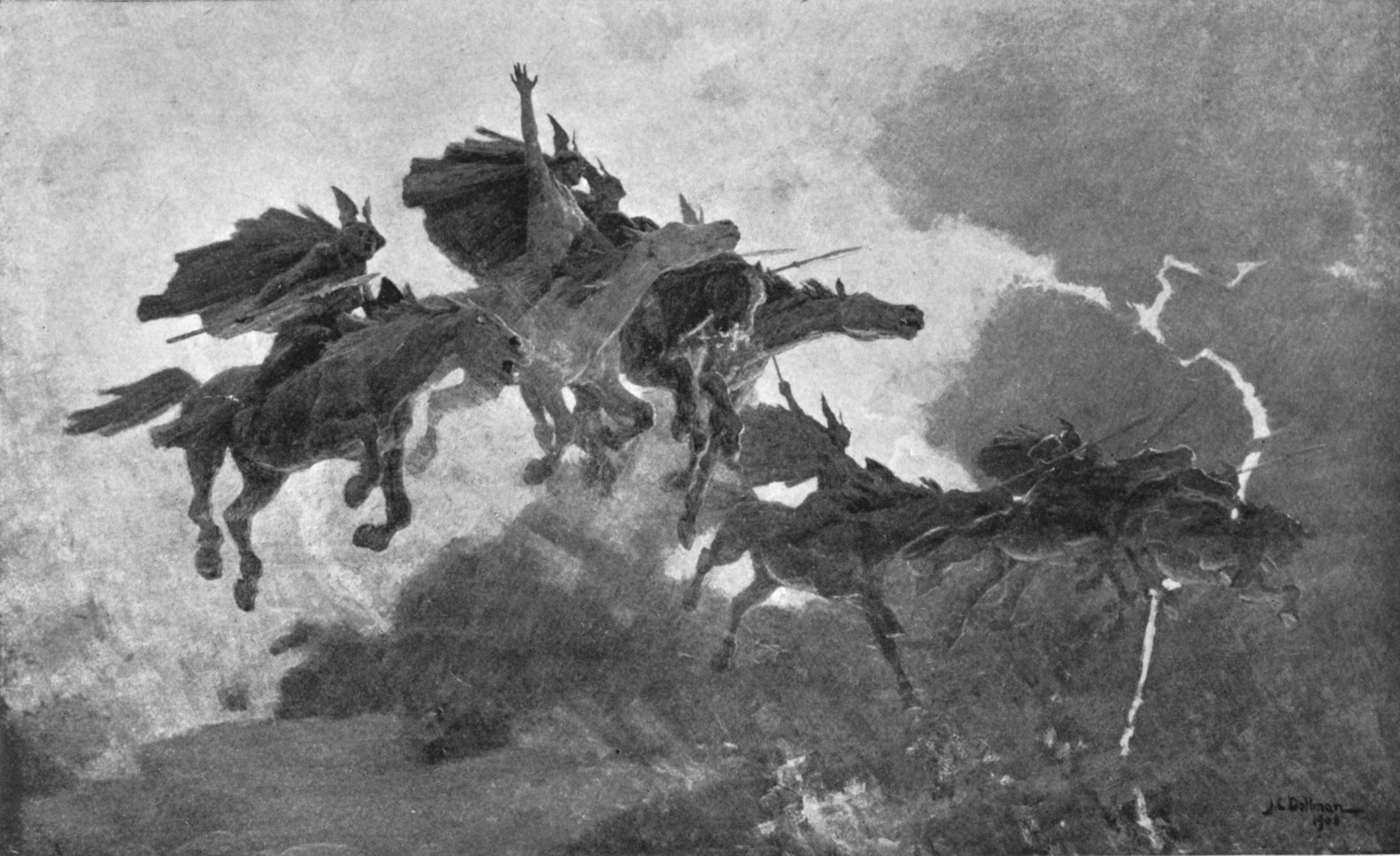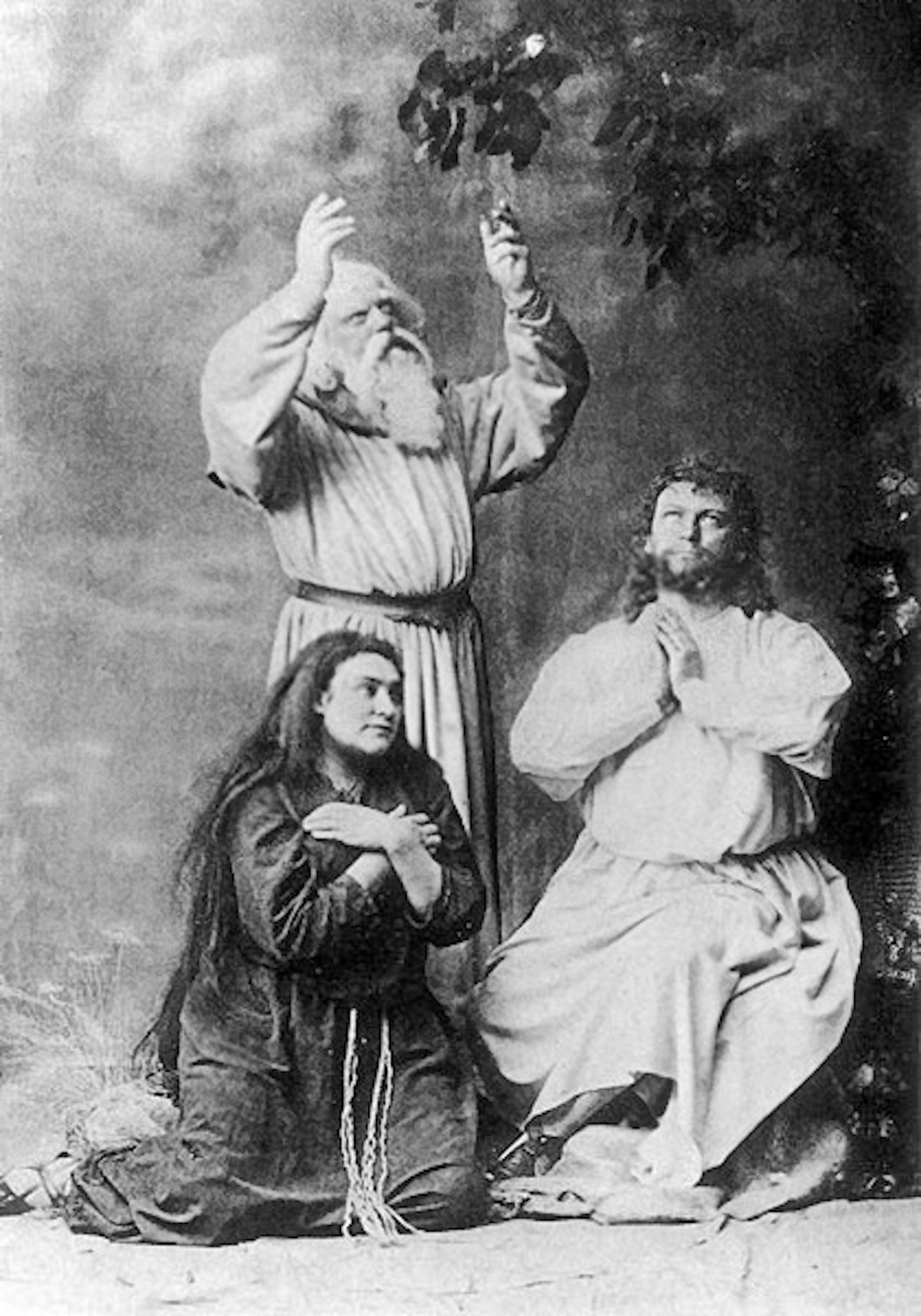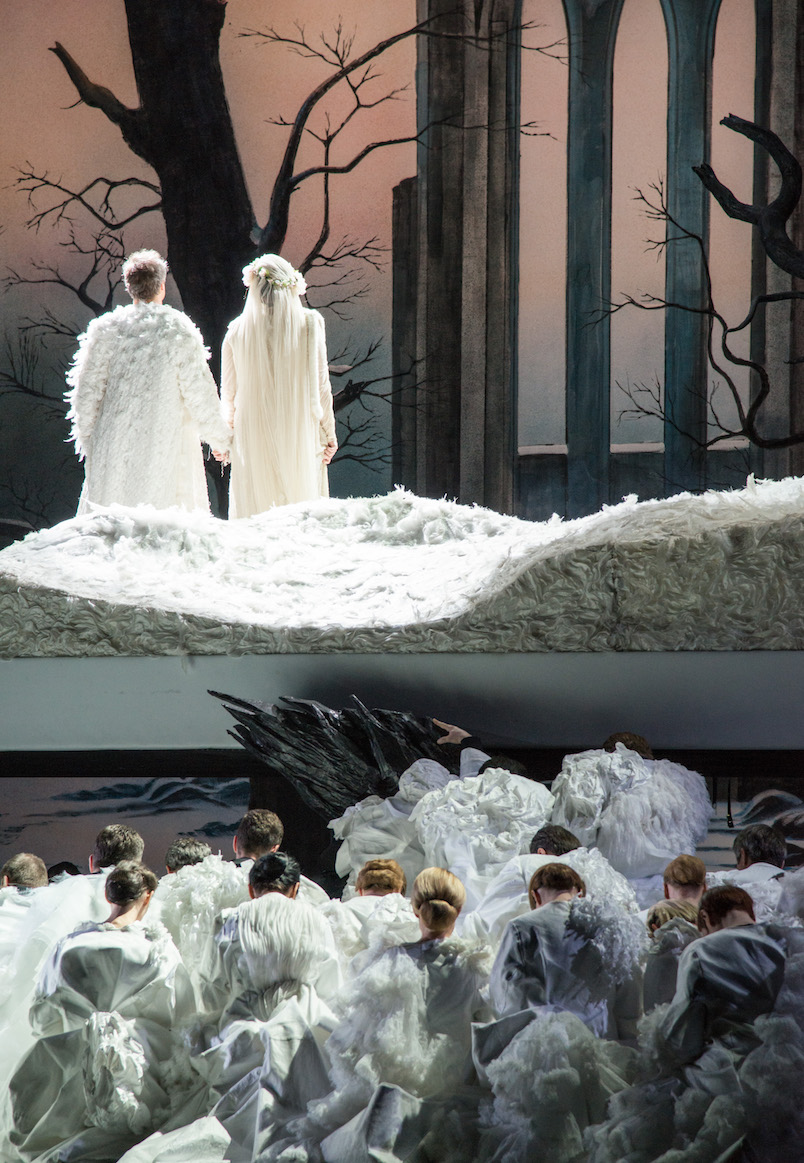The Wagner Vortex

Zane Dalal revisits the music, the drama and the pervasive social message that has become emblematic of the music of Richard Wagner.
Much has been written on the life and work of composer Richard Wagner, and even more on his famous tetralogy of operas Der Ring des Nibelungen. There is much scholarship which provides for much to understand and much to recognise. For the purposes of this short edition for ON Stage, I put forward three main areas of interest in a single thread of enquiry, which I hope will fascinate our readers.
The Music
When most musicians think of Wagner, we always contextualise him by the musical language in which he wrote. It is unmistakable, and for those involved in performing or singing his music, it is the only place to start. Imagine that the English spoken today is not the Middle English of Chaucer, nor the Early Modern English of pre-1850. Similarly, taking Hindi, or Marathi as an example, we would find many historical versions that have led, over time, to current colloquial usage. So it is with music. The musical language known to Handel is different from the one used or adopted by Mozart or Beethoven, who in turn, through Schubert, Schumann and Brahms deliver a changing musical language to Wagner. What makes Wagner remarkable is the manner in which he exploits what is given to his generation – stretching the boundaries of harmony, form and structure.
On listening to Wagner, even the first-time listener is aware of a soundscape that is large, engulfing, and at times overwhelming to the point of distraction. He takes his listeners on a journey that gives them harmonies and chord progressions that are more adventurous, lusher, more extreme and more iconoclastic than his contemporaries imagined, or allowed. He created a following of young disciples – as did Franz Liszt, related by marriage – who were ready to ‘boo’ at live performances of Brahms. Similarly, the Brahms camp – convinced of their harmonic and structural purity were there to ‘boo’ back. Wagner was not one to fit in. He was one to create his own path and demand that others follow it completely and obediently or abandon it altogether. The result is a musical score that demands much – in skill, in understanding and in sheer stamina and strength. Wagner demands it equally of the orchestral player, the soloist, the chorus member, the conductor and the entire drama regie as well.

Some would say that Wagner’s musical language is stretched to the point of breaking or collapsing back on itself. It has the framework of what is known, but constantly suggests the unknown. A literary comparison might be with the poetry of Gerard Manley Hopkins in his use of the terms ‘inscape’ and ‘instress’. Inscape refers to the unique quality of a thing, a moment or a word – its real presence. Instress is the binding force of the inscape and the impulse of its delivery mechanism to the beholder. A ‘romantic’ religious notion that everything in existence has the stamp of the creator, taking it beyond scientific mass to something more special, permeates the poetry of this period. With Wagner, there is an almost constant experiment with the sound of a note – what it means, what it implies, how it is connected to neighbouring notes and how the whole is perceived by the listener. For the purposes of this article, suffice it to say, that the musical language of Wagner alone provides no finite explanation and each question it affords is typically answered by another question. When you next listen to his music, you will become instantly aware – if you haven’t noticed it before – that you are listening to two or three directional strands simultaneously: what is actually played, what you actually hear, and what you actually thought you imagined you heard. This emotional complication is a necessary part of understanding Wagner – and is fully intentional. Now imagine all those leitmotifs, those small set phrases, sounds or chords that connote particular dramatic themes or objects throughout ‘The Ring Cycle’, – one for Valhalla, one for the Rhine, one for the Ring, one for the Curse, one for Notung the sword, and so on –they are no longer just the music, they mean so much more.
The Drama
It is not always healthy or appropriate to have your librettist and composer in the same person. In fact, without a doubt, all the greatest operatic achievements in the entire repertoire are always a great poet/ librettist brought together with a great composer, each knowingly working his expertise to join with the other, two souls combined in one. Whether Mozart and Da Ponte, Verdi and Boito, Puccini and Illica or Strauss and von Hoffmansthal, there is a real pleasure that opera lovers have in seeing great textual drama come alive in music and conversely, the music exploring a textual point. In the case of Wagner, the end result would have benefitted a great deal from a second source for text and dramatic impulse. Wagner had already embarked upon developing a whole new art form in which he positioned himself in complete dominion over all that he surveyed. He would deliver to the world, a single masterminded concept of drama where the drama, action, props, sets, costumes, storyline, orchestra, orchestral instruments, players, singers, chorus, cooks, engineers, workmen and local politicians, all marched to the same step. This was the Bayreuth Festival – and his great-grandchildren running Bayreuth today suffer from not being able to be as autocratic and dictatorial as their forebearers, though not through lack of trying.
I cannot, for the purposes of this article, summarise the plot of ‘The Ring Cycle’ because even that would be a longer endeavour than the whole article. I do however recommend that our readers read a synopsis of the plot, and then follow by reading George Bernard Shaw’s The Perfect Wagnerite. In this short, eminently readable volume, Shaw discusses at length the origins of what follows here below. There is a link between the story of the Ring, its didactic processes, and the changing dynamics of society in Germany. There are many parallels to medieval feudal lordship, hierarchy, perceived power over another being, a sense that everyone is born into a place in society, and that the strong might have dominion over the weak to their own ends. The idea of the Gods failing to keep their contract with the Giants and themselves tricked by an unseemly dwarf, and the curse of stolen gold laying waste to characters throughout the plot, may seem a little childlike in its fairy tale impulses. But there is a strong and dark undercurrent. For instance, the magical powers of the Tarnhelm, a cloak which renders its wearer invisible as if he had disappeared into the night and the fog. The idea that those at the top of society (the Gods) through their military instruments (the Valkyries), might decide on who died and who lived, and the process was based on a definition of who was a hero and who was not, in an effort to ensure that the purity of Valhalla, the last abode of Gods and Heroes would remain unsullied. How much of this played out in the real life of the Wagners?
The Social Construct
The autocratic command structure at Bayreuth presents a fascinating inherited legacy which is still partially in effect today. Everyone is and must be Wagner-obsessed. This is realised in an extraordinary way. The orchestra is made up of Wagner experts, who know the opera back to front and often better than the conductor who stands before them. I remember in Bayreuth in 1989, a singer who forgot his line during a rehearsal was greeted with the sound of 25 voices from the orchestra, singing it for him. Similarly, there is a going rate for singing Brunhilde or Siegfried, or a Valkyrie, and those rates and tables do not really consider if you are a diva or not. Everyone is there to serve the common purpose with a devotion that borders on obsession. I saw it when I was there. I hope that some of it remains uneroded, because it made for the most vital and extraordinary music-making. However, to all this there is a dark side.

Everyone had to be obsessed. While Wagner lived, they had no choice. Whilst his son Siegfried lived, they had no choice, this time fanned by Adolf Hitler’s Third Reich. Siegfried’s wife, an Englishwoman named Winnifred Williams was a close personal friend of Hitler, smuggling to him in prison the paper on which he scribbled Mein Kampf. The family and the Reich were intertwined by fate and history, and if you go to Bayreuth, and listen – as I have done – to the eerie silence of the dense, humid summer air, and look up at the window of the opera house where Hitler appeared to soldiers below, and remind yourself of the photographs you have seen of performances of the Ring, for Wehrmacht and SS Officers, in uniform with red and black swastika armbands, then you will – as I did – hear the sound of a thousand tramping boots and the echoes of the repeated “Sieg Heil”.
There are some more obvious comparisons that make one shudder which are not worth exploring in too much detail, but the SS – Vice Führer Himmler’s group modelled themselves and their underground activities, oath-taking and espoused medieval view of the purity of white Christians, entirely upon Wagner’s opera Parsifal. If you take the title Valkyrie for the operation that would save Hitler’s Germany if there were a coup, there is an ironic sense of justice that the operation would seek to see who would live or die, and who would be transported to the land of heroes. Darker still, the words used to describe the properties of the Tarnhelm, to allow its wearer to disappear into Nacht und Nebel – the night and the fog – was the secret underpinning of the December 1941 edict of whisking away anti-German instigators in the middle of the night, which culminated unchecked in the Holocaust and the Final Solution. That so many Wagnerian phrases, themes, views and beliefs would find themselves ripe for use in the legal underpinnings of communiques within Hitler’s Germany is a Gordian knot that is better cut than unravelled.

This season, we present excerpts from three great Wagner operas. The famous and soul-edifying prelude to Parsifal, the Act III Prelude, Wedding music and the first duet from Lohengrin, and the famous ‘Ride of the Valkyries’, from Act III of Die Walküre. Then, in what may prove to be the most ambitious undertaking of all, we will present almost the whole of Act I of Die Walküre (The Valkyries), the second opera of the great tetralogy Der Ring des Nibelungen. We are joined by the leading Wagner Heldentenor of his generation, Simon O’Neill, and the great soprano Amanda Atlas. I have the pleasure of leading this Wagner Fest from the podium, and I can assure you that Wagner’s music, whether listening to, preparing or playing it, is an immersive, no-holds-barred experience.
We recommend the following performances of ‘The Ring Cycle’ for different reasons:
1) There is a very powerful performance by Furtwängler and the La Scala orchestra which tempts us into the sounds and tempi that Furtwängler would have certainly played for Hitler years earlier: Wagner: Der Ring Des Nibelungen by Furtwängler, La Scala (12 CDs)
2) There is a fine and very famous collection of recordings, made for recording (not live performance) by Georg Solti and the Vienna Philharmonic, along with a documentary film, The Golden Ring, which explores how powerful music might sound, if one could rehearse and play and not be distracted by the perils and pitfalls of live opera production. The result is absolutely glorious. The international cast assembled, still unparalleled in the history of the repertoire, makes this a must-have, must-own piece of history.
3) There is a marvellous and visceral performance by Karl Böhm and the Bayreuther Festspiele Orchester, which is exactly the opposite of the Solti/Vienna, a live dramatic rendition that will make your hair curl. This is perhaps my favourite and true to the compelling dramatic line in the music.
4) There is a DVD of the Ring directed by Patrice Chéreau at Bayreuth with Pierre Boulez conducting. This is a staging that is worth seeing, even if the music, a little restrained and perfectly placed a la Boulez, doesn’t overwhelm the way Wagner perhaps intends. Deutsche Grammophon 000506209 (8 DVDs)
5) Lastly, have a look at the Kupfer/Barenboim Ring – again, a fascinating staging, and some wonderful orchestral playing, a personal soft spot because I was there to see it live in 1989: Bayreuth Festival Orchestra. Unitel D4755 (11 DVDs)
6) And the La Fura dels Baus staging of Zubin Mehta’s Ring with the Orquestra de la Comunitat Valenciana. Mehta has long had a specialty association and affinity with the music of Wagner, taking it to another level as he does incomparably with the music of Strauss, Mahler and the operas of Puccini. Orquestra de la Comunitat Valenciana. Unitel 703808 (eight DVDs)
The Symphony Orchestra of India (SOI), conducted by Zane Dalal, will present the Wagner Gala on 17th September at the Jamshed Bhabha Theatre. Dalal serves as Associate Music Director of the SOI. He is a frequent contributor to ON Stage and blogs at www.zanedalal.com/blog. He will be delivering talks on Wagner and other topics during the SOI season.
This piece was originally published by the National Centre for the Performing Arts, Mumbai, in the September 2019 issue of ON Stage – their monthly arts magazine.





